-
 Bitcoin
Bitcoin $106,754.6083
1.33% -
 Ethereum
Ethereum $2,625.8249
3.80% -
 Tether USDt
Tether USDt $1.0001
-0.03% -
 XRP
XRP $2.1891
1.67% -
 BNB
BNB $654.5220
0.66% -
 Solana
Solana $156.9428
7.28% -
 USDC
USDC $0.9998
0.00% -
 Dogecoin
Dogecoin $0.1780
1.14% -
 TRON
TRON $0.2706
-0.16% -
 Cardano
Cardano $0.6470
2.77% -
 Hyperliquid
Hyperliquid $44.6467
10.24% -
 Sui
Sui $3.1128
3.86% -
 Bitcoin Cash
Bitcoin Cash $455.7646
3.00% -
 Chainlink
Chainlink $13.6858
4.08% -
 UNUS SED LEO
UNUS SED LEO $9.2682
0.21% -
 Avalanche
Avalanche $19.7433
3.79% -
 Stellar
Stellar $0.2616
1.64% -
 Toncoin
Toncoin $3.0222
2.19% -
 Shiba Inu
Shiba Inu $0.0...01220
1.49% -
 Hedera
Hedera $0.1580
2.75% -
 Litecoin
Litecoin $87.4964
2.29% -
 Polkadot
Polkadot $3.8958
3.05% -
 Ethena USDe
Ethena USDe $1.0000
-0.04% -
 Monero
Monero $317.2263
0.26% -
 Bitget Token
Bitget Token $4.5985
1.68% -
 Dai
Dai $0.9999
0.00% -
 Pepe
Pepe $0.0...01140
2.44% -
 Uniswap
Uniswap $7.6065
5.29% -
 Pi
Pi $0.6042
-2.00% -
 Aave
Aave $289.6343
6.02%
Does the MACD column turning from green to red mean a trend reversal?
The MACD histogram's color change signals momentum shifts, but traders should confirm with other indicators like RSI or volume for reliable trend reversals in volatile crypto markets.
Jun 16, 2025 at 12:22 pm
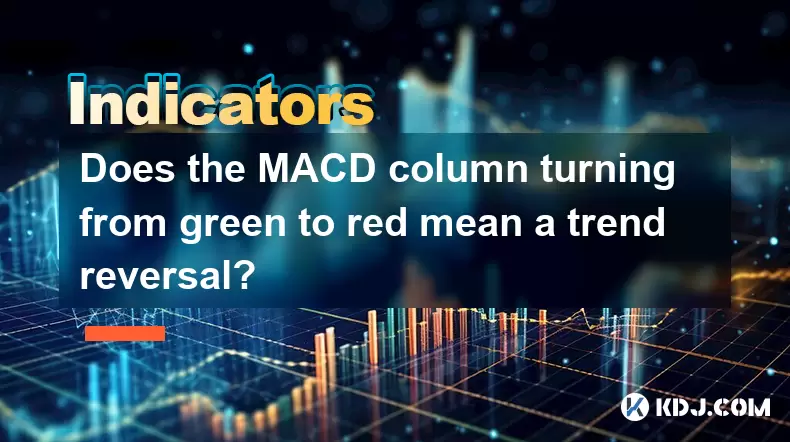
Understanding the MACD Indicator and Its Components
The Moving Average Convergence Divergence (MACD) is a popular technical analysis tool used by traders to identify potential trend reversals, momentum shifts, and entry or exit points in financial markets, including cryptocurrency. The indicator consists of three main components: the MACD line, the signal line, and the MACD histogram (also known as the "column").
The MACD line is calculated by subtracting the 26-period Exponential Moving Average (EMA) from the 12-period EMA. The signal line is typically a 9-period EMA of the MACD line. The histogram represents the difference between the MACD line and the signal line, visually displayed as bars above or below the zero line.
When the histogram turns green, it indicates that the MACD line is above the signal line, suggesting increasing bullish momentum.
Conversely, when the histogram turns red, it means the MACD line has dropped below the signal line, signaling bearish pressure.What Does a Color Change in the MACD Histogram Indicate?
A shift from green to red in the MACD histogram suggests that the short-term momentum has started to weaken compared to the longer-term average. This often happens when buying pressure diminishes and selling pressure begins to take over.
However, this change alone does not guarantee a trend reversal. It simply signals a potential shift in momentum. Traders should not rely solely on this signal without confirming it with other indicators or price action patterns.
Red bars growing in height indicate accelerating bearish momentum.
Green bars shrinking may suggest weakening bullish control.
The crossover point (from positive to negative territory) can act as a key level for decision-making.
Why the MACD Histogram Should Not Be Viewed in Isolation
In the context of cryptocurrency trading, where volatility is high and market sentiment changes rapidly, relying solely on the MACD histogram's color change can lead to false signals or premature trades.
For example, during strong uptrends in crypto assets like Bitcoin or Ethereum, the MACD histogram may briefly turn red due to profit-taking or minor pullbacks, but the overall trend remains intact. Similarly, in a downtrend, temporary green bars may appear due to short covering or relief rallies without indicating a true reversal.
To avoid misinterpretation:
Use the MACD histogram alongside price action and candlestick patterns.
Combine it with volume indicators to confirm strength behind moves.
Cross-reference with support/resistance levels or moving averages.
How to Confirm a Potential Trend Reversal Using MACD
A reliable way to assess whether a green-to-red shift in the MACD histogram indicates a real trend reversal is by analyzing additional MACD-based signals:
Check if the MACD line crosses below the signal line — this is known as a "bearish crossover."
Observe whether the MACD line falls below the zero line, indicating a shift from bullish to bearish momentum.
Look for divergences between the MACD histogram and price — for instance, if price makes higher highs but the histogram makes lower highs, that could signal weakening momentum.
These combined signals provide a more robust framework for interpreting whether the histogram’s color shift reflects a genuine trend change.
Practical Steps to Apply MACD Histogram Analysis in Crypto Trading
To effectively use the MACD histogram in your cryptocurrency trading strategy, follow these practical steps:
Set up the standard MACD settings (12, 26, 9) on your charting platform such as TradingView or Binance's native tools.
Identify areas where the histogram transitions from green to red near key support or resistance zones.
Monitor the behavior of the histogram across multiple timeframes — for example, check daily, 4-hour, and 1-hour charts for alignment.
Avoid entering trades based solely on the histogram turning red unless accompanied by a bearish crossover and confirmation from other tools like RSI or volume spikes.
This step-by-step approach helps filter out noise and increases the probability of making informed trading decisions.
Frequently Asked Questions
Q: Can the MACD histogram be used effectively in sideways or ranging markets?
Yes, but with caution. In range-bound conditions, the histogram tends to oscillate frequently between green and red without clear direction. Traders should combine it with tools like Bollinger Bands or Stochastic Oscillator to better interpret signals in such environments.
Q: How does the MACD histogram differ from the regular MACD line and signal line?
The histogram visualizes the gap between the MACD line and the signal line, providing an easy way to see momentum changes. While the MACD line crossing the signal line gives crossovers, the histogram offers early insight into momentum shifts before the actual crossover occurs.
Q: Are there alternative indicators that work better than the MACD histogram in crypto markets?
Some traders prefer using the RSI or Volume Weighted MACD in highly volatile crypto markets. However, no single indicator is superior in all conditions. Combining the MACD histogram with complementary tools often yields better results than using it alone.
Q: What timeframes are best suited for observing MACD histogram color changes?
Intermediate timeframes like 4-hour or 1-hour charts tend to offer clearer signals. Shorter timeframes (e.g., 5-minute or 15-minute) can generate too many false signals, while weekly charts might lag significantly in fast-moving crypto markets.
Disclaimer:info@kdj.com
The information provided is not trading advice. kdj.com does not assume any responsibility for any investments made based on the information provided in this article. Cryptocurrencies are highly volatile and it is highly recommended that you invest with caution after thorough research!
If you believe that the content used on this website infringes your copyright, please contact us immediately (info@kdj.com) and we will delete it promptly.
- 2025-W Uncirculated American Gold Eagle and Dr. Vera Rubin Quarter Mark New Products
- 2025-06-13 06:25:13
- Ruvi AI (RVU) Leverages Blockchain and Artificial Intelligence to Disrupt Marketing, Entertainment, and Finance
- 2025-06-13 07:05:12
- H100 Group AB Raises 101 Million SEK (Approximately $10.6 Million) to Bolster Bitcoin Reserves
- 2025-06-13 06:25:13
- Galaxy Digital CEO Mike Novogratz Says Bitcoin Will Replace Gold and Go to $1,000,000
- 2025-06-13 06:45:13
- Trust Wallet Token (TWT) Price Drops 5.7% as RWA Integration Plans Ignite Excitement
- 2025-06-13 06:45:13
- Ethereum (ETH) Is in the Second Phase of a Three-Stage Market Cycle
- 2025-06-13 07:25:13
Related knowledge
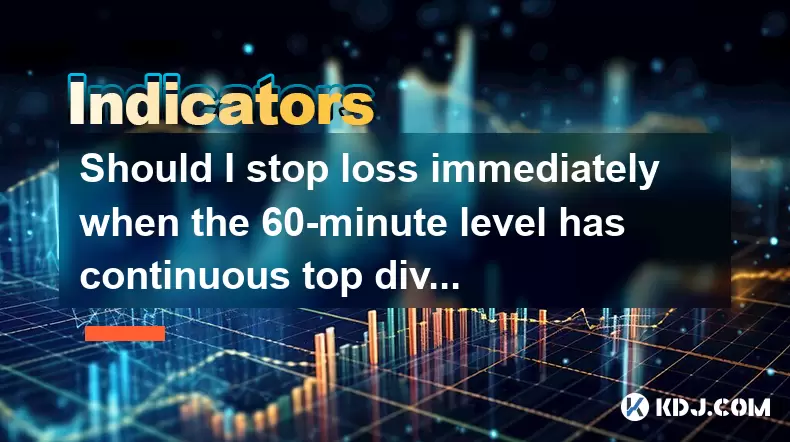
Should I stop loss immediately when the 60-minute level has continuous top divergence?
Jun 17,2025 at 05:28pm
Understanding Top Divergence in the 60-Minute ChartIn cryptocurrency trading, top divergence refers to a technical signal where the price of an asset makes higher highs while the indicator (often RSI or MACD) makes lower lows. This is commonly interpreted as a sign of weakening momentum and potential reversal. When this occurs on the 60-minute chart, it...
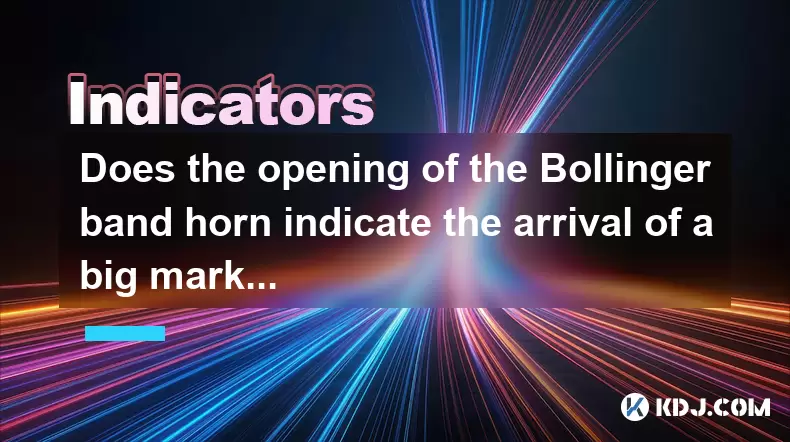
Does the opening of the Bollinger band horn indicate the arrival of a big market?
Jun 17,2025 at 06:28pm
Understanding the Bollinger Bands and Their StructureBollinger Bands are a widely used technical analysis tool in the cryptocurrency market, developed by John Bollinger. They consist of three lines: a simple moving average (SMA), typically set at 20 periods, and two standard deviation bands above and below this SMA. These bands dynamically expand and co...
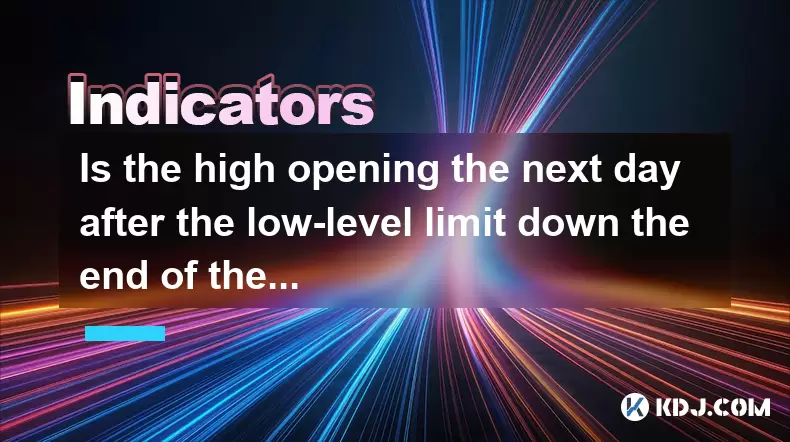
Is the high opening the next day after the low-level limit down the end of the wash?
Jun 17,2025 at 05:57pm
Understanding the Concept of a Limit Down and Its ImplicationsIn the world of cryptocurrency trading, a limit down refers to a situation where the price of a digital asset drops sharply, reaching its maximum allowable decline within a specific time frame. This mechanism is often seen on exchanges that implement daily price limits to prevent excessive vo...
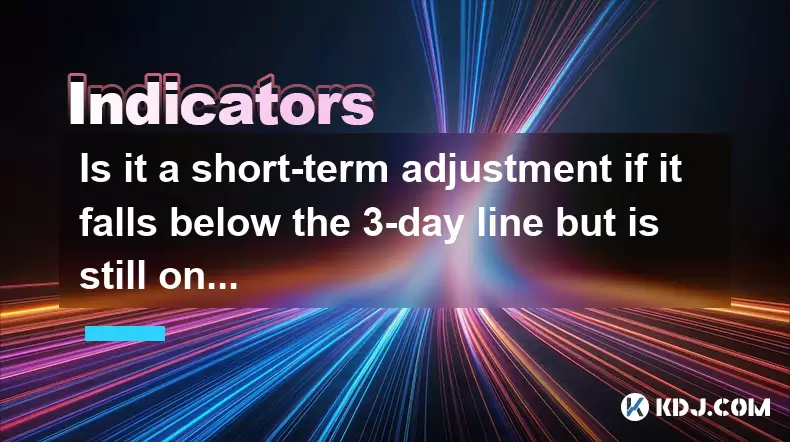
Is it a short-term adjustment if it falls below the 3-day line but is still on the 10-day line?
Jun 17,2025 at 04:07pm
Understanding the 3-Day and 10-Day Moving AveragesIn cryptocurrency trading, moving averages are essential tools for gauging trend strength and potential reversals. The 3-day moving average is a short-term indicator that reflects recent price action with minimal lag, making it highly sensitive to sudden market shifts. In contrast, the 10-day moving aver...
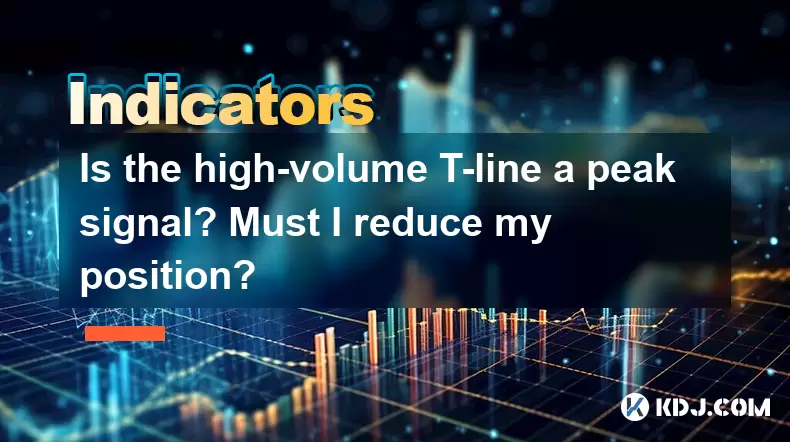
Is the high-volume T-line a peak signal? Must I reduce my position?
Jun 17,2025 at 06:07pm
Understanding the T-Line Pattern in Cryptocurrency TradingIn cryptocurrency trading, technical patterns are frequently used by traders to anticipate price movements. One such pattern is the T-line, which appears on candlestick charts and is characterized by a long upper or lower shadow with little or no body. A high-volume T-line occurs when this patter...
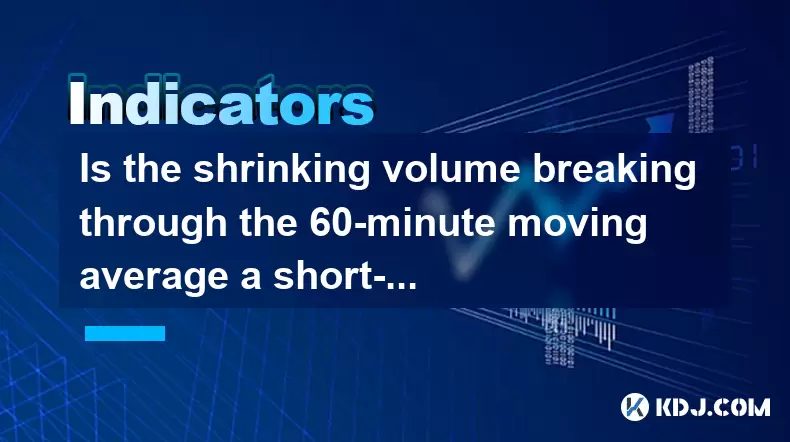
Is the shrinking volume breaking through the 60-minute moving average a short-term weakness? Should I run?
Jun 17,2025 at 06:21pm
Understanding the 60-Minute Moving Average in Cryptocurrency TradingIn cryptocurrency trading, the 60-minute moving average is a popular technical indicator used by traders to assess short-term trends. This metric calculates the average price of an asset over the last 60 minutes and updates with each passing minute. Traders often use it to identify pote...

Should I stop loss immediately when the 60-minute level has continuous top divergence?
Jun 17,2025 at 05:28pm
Understanding Top Divergence in the 60-Minute ChartIn cryptocurrency trading, top divergence refers to a technical signal where the price of an asset makes higher highs while the indicator (often RSI or MACD) makes lower lows. This is commonly interpreted as a sign of weakening momentum and potential reversal. When this occurs on the 60-minute chart, it...

Does the opening of the Bollinger band horn indicate the arrival of a big market?
Jun 17,2025 at 06:28pm
Understanding the Bollinger Bands and Their StructureBollinger Bands are a widely used technical analysis tool in the cryptocurrency market, developed by John Bollinger. They consist of three lines: a simple moving average (SMA), typically set at 20 periods, and two standard deviation bands above and below this SMA. These bands dynamically expand and co...

Is the high opening the next day after the low-level limit down the end of the wash?
Jun 17,2025 at 05:57pm
Understanding the Concept of a Limit Down and Its ImplicationsIn the world of cryptocurrency trading, a limit down refers to a situation where the price of a digital asset drops sharply, reaching its maximum allowable decline within a specific time frame. This mechanism is often seen on exchanges that implement daily price limits to prevent excessive vo...

Is it a short-term adjustment if it falls below the 3-day line but is still on the 10-day line?
Jun 17,2025 at 04:07pm
Understanding the 3-Day and 10-Day Moving AveragesIn cryptocurrency trading, moving averages are essential tools for gauging trend strength and potential reversals. The 3-day moving average is a short-term indicator that reflects recent price action with minimal lag, making it highly sensitive to sudden market shifts. In contrast, the 10-day moving aver...

Is the high-volume T-line a peak signal? Must I reduce my position?
Jun 17,2025 at 06:07pm
Understanding the T-Line Pattern in Cryptocurrency TradingIn cryptocurrency trading, technical patterns are frequently used by traders to anticipate price movements. One such pattern is the T-line, which appears on candlestick charts and is characterized by a long upper or lower shadow with little or no body. A high-volume T-line occurs when this patter...

Is the shrinking volume breaking through the 60-minute moving average a short-term weakness? Should I run?
Jun 17,2025 at 06:21pm
Understanding the 60-Minute Moving Average in Cryptocurrency TradingIn cryptocurrency trading, the 60-minute moving average is a popular technical indicator used by traders to assess short-term trends. This metric calculates the average price of an asset over the last 60 minutes and updates with each passing minute. Traders often use it to identify pote...
See all articles

























































































